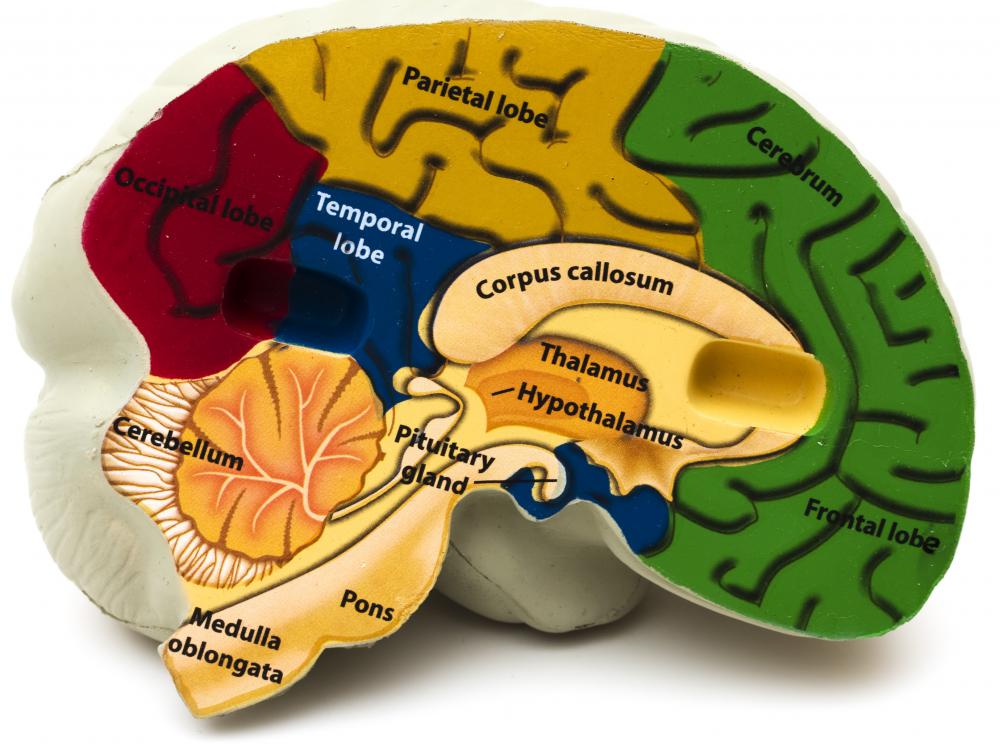At WiseGEEK, we're committed to delivering accurate, trustworthy information. Our expert-authored content is rigorously fact-checked and sourced from credible authorities. Discover how we uphold the highest standards in providing you with reliable knowledge.
What is the Fourth Ventricle?
The ventricular system is composed of several cavities in the human brain that contain cerebrospinal fluid (CSF) and is continuous along the brain stem and spinal cord. The fourth ventricle is one of the four cavities that comprise the ventricular system; the other cavities are the third ventricle and the right and left lateral ventricles. The fourth ventricle is filled with cerebrospinal fluid and is located between the cerebral aqueduct and the obex of the brain.
In terms of structure, the fourth ventricle has a diamond shape structure with a top and bottom. The cerebellum forms the top of the ventricle, commonly referred to as the "roof." The rhomboid fossa forms the bottom of the ventricle, which is referred to as "floor," and the cerebellar peduncles form the sides, or "walls." When the cerebrospinal fluid enters the fourth ventricle from the cerebral aqueduct, it can exit through the subarachnoid space.

The floor of the ventricle has numerous characteristics that can help distinguish it. These include the obex, facial colliculus, and the sulcus limitans. The obex is posterior part of the fourth ventricle and acts as an invisible marker that helps divide between the spinal cord and the medulla of the brain. The facial nerve forms the facial colliculus, and the sulcus limitans is a "border line" that divides the alar and basal plates.

The main function of the fourth ventricle is to provide cushioning for the brain by containing cerebrospinal fluid. Other functions include forming the central canal of the spinal cord and protecting the brain from any trauma that it might experience. These are very important functions, and trauma to the fourth ventricle can be very dangerous.
Development of the ventricle, along with the other ventricles of the ventricular system occurs in central canal of the neural tube. The third and fourth ventricles are created when the central canal expands. This happens during the first trimester of pregnancy. The fourth ventricle is specially formed by part of the tube of the rhombencephalon, also called the hindbrain.

There are several diseases that can affect the fourth ventricle as well as the entire ventricular system of the brain. Diseases such as hydrocephalus occur when the CSF production is larger than normal. Also, hydrocephalus can occur when there is blockage within the cerebral aqueduct, even if normal CSF production is occurring. This area of the brain also is a common site for a variety of tumors and cysts in adults.
AS FEATURED ON:
AS FEATURED ON:














Discuss this Article
Post your comments